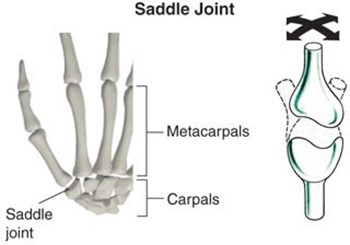Which of the following is not a primary function of the skeletal system?
All of the above.
Storing inorganic salts.
Attachment sites for muscles.
Support and Protection.
The Correct Answer is A
The skeletal system has five main functions: support, movement, protection, mineral and fat storage, and blood cell formation.
All of the other choices are primary functions of the skeletal system.
Choice B is incorrect because storing inorganic salts is one of the functions of the skeletal system.
The bone tissue acts as a reservoir for minerals like calcium and phosphorus.
Choice C is incorrect because attachment sites for muscles is one of the functions of the skeletal system.
Bones facilitate movement by serving as points of attachment for muscles.
Choice D is incorrect because support and protection is one of the functions of the skeletal system.
Bones provide a scaffold that supports the body and protects the internal organs.
Nursing Test Bank
Naxlex Comprehensive Predictor Exams
Related Questions
Correct Answer is C
Explanation
The thumb has three joints: the carpometacarpal (CMC) joint, the metacarpophalangeal (MP) joint, and the interphalangeal (IP) joint.
The CMC joint is a saddle type of joint that allows the thumb to move in multiple directions. A saddle joint has two concave surfaces that fit together like a rider on a horse.

Choice A is incorrect because hinge joints allow only flexion and extension movements, such as the IP joints of the thumb.
Choice B is incorrect because condylar joints have an oval-shaped surface that articulates with a shallow cavity, such as the MP joint of the thumb.
Choice D is incorrect because ball and socket joints have a spherical head that fits into a cup-like socket, such as the shoulder or hip joints.
Correct Answer is ["condylar process of the mandible"]
Explanation
The mandible condylar process is a bony projection located at the posterior aspect of the mandible, which is the lower jawbone.
It is a rounded, knob-like structure that articulates with the temporal bone of the skull, forming the temporomandibular joint (TMJ).
The condylar process allows for movements of the mandible, including opening and closing the mouth and chewing food.
The shape and position of the condylar process can affect the function of the TMJ and can contribute to conditions such as TMJ disorders.

Whether you are a student looking to ace your exams or a practicing nurse seeking to enhance your expertise , our nursing education contents will empower you with the confidence and competence to make a difference in the lives of patients and become a respected leader in the healthcare field.
Visit Naxlex, invest in your future and unlock endless possibilities with our unparalleled nursing education contents today
Report Wrong Answer on the Current Question
Do you disagree with the answer? If yes, what is your expected answer? Explain.
Kindly be descriptive with the issue you are facing.
